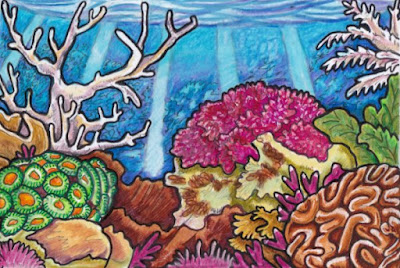About the Project
The ZooTrophy Animal-a-Day project began on October 15th, 2013 as illustrator Angela "LemurKat" Oliver began working her way, systematically but selectively, through the alphabet and presenting, via social media, an illustrated animal to the world. Daily.
All pieces are drawn as 2.5 x 3.5 inch collectible cards, using a combination of polychromos and prismacolor pencils, along with other art materials. Many are still available for purchase ($10) or trade, so drop her an email if anything captures your eye or if there is an animal you wish to request.
It is predicted this project will take her at least two years to complete - with approximately 36 animals being drawn for each letter. She has also used the images to create a collectible hardback encyclopedia series, playing cards and a desk calendar, as well as the ZooTrophy collectible trading card game.
All pieces are drawn as 2.5 x 3.5 inch collectible cards, using a combination of polychromos and prismacolor pencils, along with other art materials. Many are still available for purchase ($10) or trade, so drop her an email if anything captures your eye or if there is an animal you wish to request.
It is predicted this project will take her at least two years to complete - with approximately 36 animals being drawn for each letter. She has also used the images to create a collectible hardback encyclopedia series, playing cards and a desk calendar, as well as the ZooTrophy collectible trading card game.
Thursday, May 26, 2016
Ecosystem: The Ocean covers 2/3s of the Earth's surface.
Ocean covers two-thirds of Earth's surface and contains a variety of ecosystems with greater diversity than those found on land, from the frozen polar reaches, to the warm coral reefs of the tropics and down into the deep and lightless trenchs. There are three main oceans: the Atlantic, the Pacific and the Indian, through which great ocean currents swirl, some carrying warm water, others cool. These influence the world's weather systems.
Life in the oceans ranges from microscopic plankton to the massive blue whale, it is populated with terrifying hunters, deepsea creatures that look to have crawled from your nightmares and other life forms so strange that it is hard to believe they are real. The ocean floor is referred to as the benthic habitat whilst the water itself is the pelagic, both supporting a plethora of life. It is the coral reef, however, that is perhaps the richest in diversity.
There are many threats the ocean and its inhabitants must face, including over-fishing, bottom trawling and pollution. 80% of litter in the water comes from land: anything that ends up in our waterways eventually ends up at sea. Plastic bags, bottles and other non-biodegradable litter has been carried by the currents to form a massive patch of rubbish, known as the Great Pacific Garbage Patch. This plastic disintegrates into smaller and smaller pieces, being consumed by creatures and eventually killing them.
Subscribe to:
Post Comments (Atom)


No comments:
Post a Comment